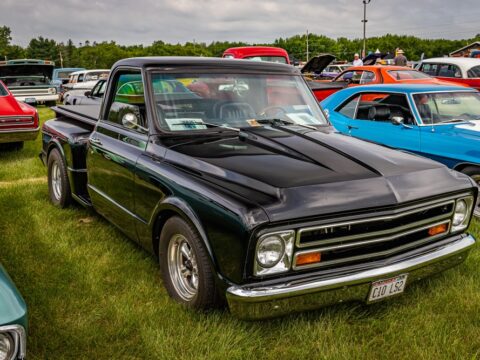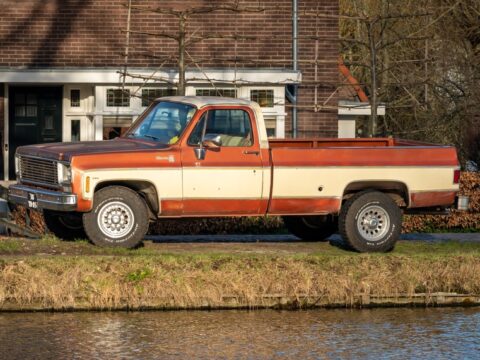If you’re a fan of speed and raw power, classic muscle cars are hard to beat. These iconic vehicles were built with high-performance engines designed to push the limits of what cars could do on the road. From roaring V8s to legendary designs, these muscle cars not only turned heads but also set the standard for speed and performance. In this list, we’ll explore 25 classic muscle cars that were engineered for speed and continue to impress enthusiasts today.
Contents
1969 Dodge Charger R/T

The 1969 Dodge Charger R/T earned its place in muscle car history with its iconic 440 Magnum V8 engine, capable of delivering 375 horsepower. This engine provided exceptional acceleration and top-end speed, making the Charger R/T a favorite among performance enthusiasts. Its aggressive styling and powerful engine made it one of the most sought-after muscle cars of its time, offering an ideal balance of speed, torque, and road presence.
1970 Chevrolet Chevelle SS 454

The 1970 Chevelle SS 454 LS6 was a game-changer with its 454 cubic-inch V8 engine producing a monstrous 450 horsepower. The LS6 option turned the Chevelle into one of the most powerful muscle cars of the era, combining brute force with a stylish design. The combination of massive displacement, high compression, and a lightweight chassis allowed the Chevelle SS to dominate drag strips and highways alike.
1967 Shelby GT500

Carroll Shelby’s 1967 GT500 featured the legendary 428 Cobra Jet V8 engine, producing over 355 horsepower. This gave the GT500 enough muscle to challenge even the fastest cars of the 1960s. The car’s aggressive styling, paired with its high-performance engine, made it one of the most iconic American muscle cars, beloved for its speed and dominance on the road.
1970 Plymouth Hemi Cuda

The 1970 Hemi Cuda is famous for its 426 Hemi V8 engine, generating a jaw-dropping 425 horsepower. With its unmistakable styling and raw power, the Hemi Cuda became a legend among muscle cars. Its engine was originally designed for racing, offering unparalleled speed and acceleration. The combination of high performance and distinctive design made it a benchmark for muscle car enthusiasts.
1969 Pontiac GTO Judge

The 1969 Pontiac GTO Judge came with a Ram Air IV 400 V8 engine, which produced 370 horsepower. Known for its bold graphics and powerful engine, the Judge was built for speed and performance. The combination of the advanced Ram Air system and strong V8 power made it one of the most thrilling muscle cars of its time, known for both its looks and its capability on the road.
1969 Ford Mustang Boss 429

The 1969 Boss 429 Mustang was powered by a massive 429 cubic-inch V8 engine, specifically designed for NASCAR. It produced 375 horsepower and was one of the most potent Mustangs ever made. With its race-ready engine, the Boss 429 was all about high-speed performance, featuring advanced engineering that made it a force on both the streets and the track.
1970 Buick GSX

The 1970 Buick GSX was fitted with a Stage 1 455 cubic-inch V8 engine that produced 360 horsepower but an incredible 510 lb-ft of torque, making it one of the most torque-heavy muscle cars of the era. The GSX combined luxury with performance, offering a smooth yet brutally fast ride. Its high torque allowed for rapid acceleration, making it a top choice for muscle car fans who craved both speed and comfort.
1968 Dodge Dart GTS 440

With its lightweight body and a big-block 440 V8 engine, the 1968 Dodge Dart GTS 440 delivered explosive performance. Its powerful 375-horsepower engine provided enough torque to push the small-bodied Dart to impressive speeds, making it a sleeper hit among muscle cars. The Dart GTS was revered for its raw power and quick quarter-mile times.
1966 Chevrolet Corvette L72 427

The 1966 Corvette L72 featured a 427 cubic-inch V8 engine producing 425 horsepower, making it a high-performance beast. This Corvette was known for its ability to reach high speeds quickly, thanks to its potent engine and lightweight frame. The L72 model is a favorite among collectors for its blend of stunning design and exceptional power on the road.
1969 AMC AMX 390

The 1969 AMC AMX was equipped with a 390 cubic-inch V8 engine producing 315 horsepower. Though smaller than its competitors, the AMX’s lightweight body and powerful engine gave it impressive speed and acceleration. It could go from 0 to 60 mph in under six seconds, making it one of the faster muscle cars of the late 1960s.
1971 Oldsmobile 442 W-30

The 1971 Oldsmobile 442 W-30 featured a 455 cubic-inch V8 engine, producing 350 horsepower and 500 lb-ft of torque. This combination of power and torque made the 442 a formidable performer, capable of quick acceleration and high-speed cruising. It was built for both street performance and comfortable driving, making it one of the most versatile muscle cars.
1971 Dodge Charger Super Bee
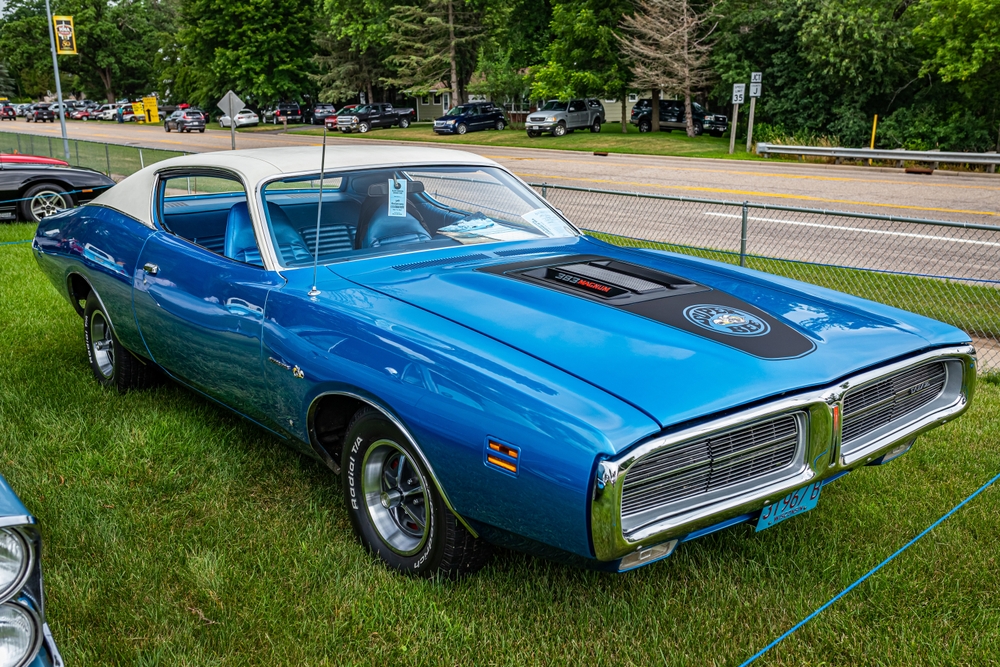
The 1971 Super Bee came equipped with a 440 Six Pack V8 engine, delivering 385 horsepower. This engine setup included three two-barrel carburetors, providing serious acceleration and performance. The Super Bee’s aggressive styling and powerful engine made it a standout among Dodge’s muscle car lineup.
1969 Mercury Cougar Eliminator

The 1969 Mercury Cougar Eliminator offered either a Boss 302 or 428 Cobra Jet V8 engine, giving drivers the choice of a high-revving small-block or a torque-heavy big-block. Both engines delivered impressive power, with the 428 CJ producing up to 335 horsepower. The Eliminator was Mercury’s answer to the Mustang, and its performance options made it a respected competitor.
1970 Pontiac Firebird Trans Am

The 1970 Trans Am was notable for its Ram Air IV 400 V8 engine, which produced 345 horsepower. The Firebird’s sleek design and performance-oriented engine made it one of Pontiac’s top performers. With excellent handling and plenty of power, the Trans Am became a favorite among those seeking speed and style.
1971 Plymouth Road Runner

The 1971 Road Runner was powered by a 440 Six Barrel V8 engine, producing 385 horsepower. This setup made it one of the most potent muscle cars of the early 1970s, capable of blistering straight-line performance. The Road Runner’s combination of raw power and aggressive styling solidified its place in muscle car history.
1968 Chevrolet Camaro Z/28

The 1968 Camaro Z/28 was designed for racing, featuring a 302 cubic-inch V8 engine. Although it produced around 290 horsepower, its lightweight build and high-revving engine made it an excellent track car. The Z/28’s racing pedigree and sharp handling made it a must-have for performance enthusiasts.
1966 Shelby Cobra 427

The 1966 Shelby Cobra 427 is a legendary muscle car known for its 427 cubic-inch V8 engine that produced over 425 horsepower. Its lightweight body and massive engine gave it incredible speed, making it one of the fastest cars of the 1960s. The Cobra 427’s racing heritage and blistering acceleration make it one of the most iconic muscle cars ever.
1973 De Tomaso Pantera

Powered by a Ford 351 Cleveland V8 engine, the 1973 De Tomaso Pantera combined American muscle with Italian styling. The mid-engine layout and 330 horsepower made the Pantera fast and nimble, offering a unique driving experience that set it apart from other muscle cars of the time.
1969 Ford Torino Talladega
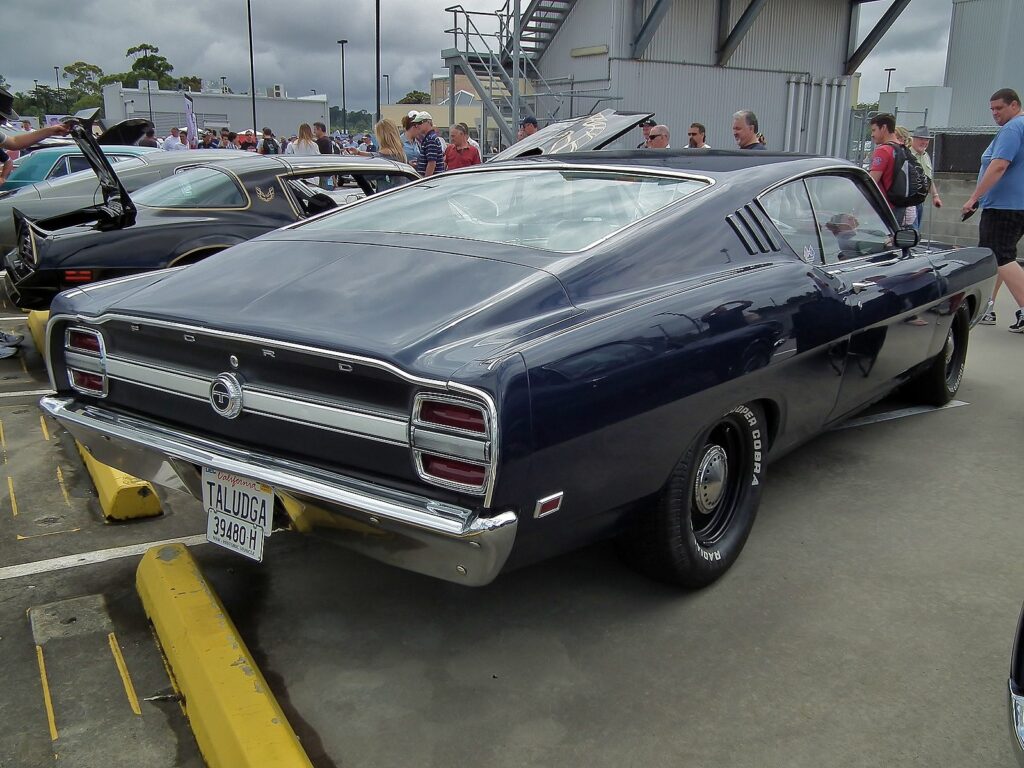
The 1969 Ford Torino Talladega featured a 428 Cobra Jet V8 engine, delivering around 335 horsepower. It was built for NASCAR racing, with aerodynamic improvements that helped it achieve high speeds on the track. The Talladega’s combination of power and aerodynamics made it a muscle car built for both speed and competition.
1970 Chevrolet Nova SS

The 1970 Nova SS was available with a 396 cubic-inch big-block V8 engine, offering 375 horsepower. Its lightweight body and powerful engine made it a great performer on the drag strip. The Nova SS was a sleeper muscle car that packed serious power, making it a favorite among street racers.
1970 Dodge Challenger R/T

The 1970 Dodge Challenger R/T offered the legendary 426 Hemi V8 engine, producing 425 horsepower. Its aggressive looks and massive engine made it one of the most powerful muscle cars ever built. The Challenger R/T’s Hemi engine became a symbol of muscle car performance and is still highly regarded today.
1970 Mercury Cyclone Spoiler

The 1970 Mercury Cyclone Spoiler came with a 429 Super Cobra Jet engine, delivering up to 370 horsepower. This engine gave the Cyclone exceptional speed and power, making it a top performer in NASCAR and on the street. The Cyclone Spoiler’s combination of performance and aggressive design made it a standout muscle car.
1969 Plymouth GTX
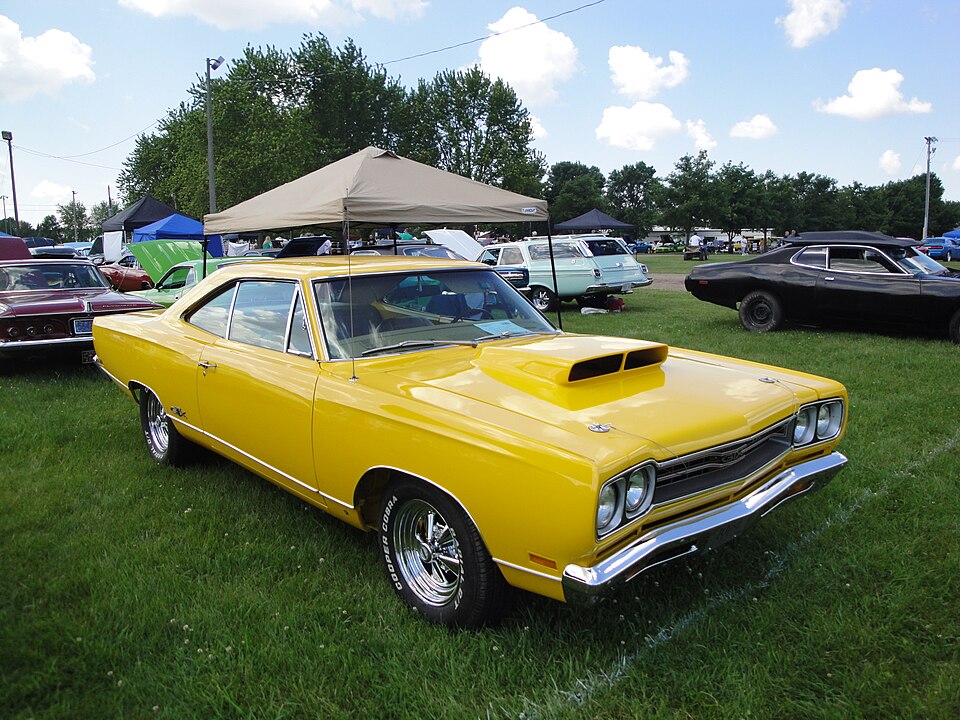
The 1969 Plymouth GTX was offered with a 440 cubic-inch V8 engine, producing 375 horsepower. Known for its luxury features and powerful engine, the GTX was built for both speed and comfort. Its high-torque engine and refined design made it a favorite among muscle car enthusiasts seeking performance with style.
1971 Ford Mustang Mach 1

The 1971 Ford Mustang Mach 1 was equipped with a 429 Super Cobra Jet engine, offering 370 horsepower. This high-performance engine made the Mach 1 one of the fastest Mustangs of its time. With its aggressive styling and powerful engine, the Mach 1 became a symbol of American muscle car culture.
1968 Pontiac Firebird 400
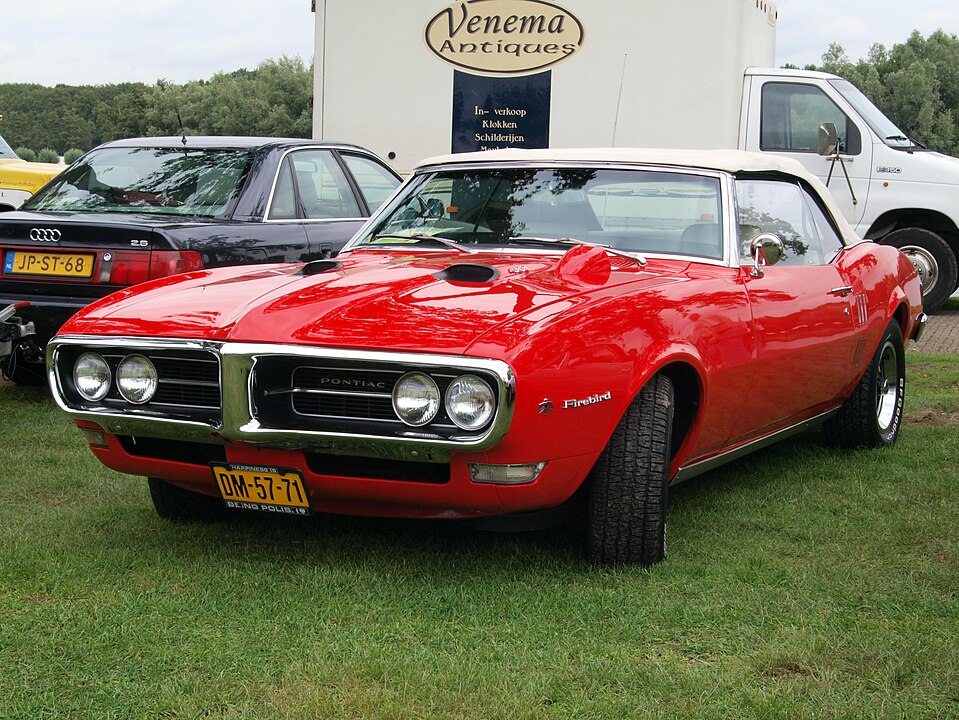
The 1968 Pontiac Firebird 400 featured a 400 cubic-inch V8 engine, producing 330 horsepower. The Firebird 400 offered excellent performance with a sleek design, making it one of the most iconic Pontiacs. Its blend of power and style ensured its place among the top muscle cars of the era.
This article originally appeared in MyCarMakesNoise.
More from MyCarMakesNoise
13 Fun Facts About Harley-Davidson Motorcycles

Harley-Davidson motorcycles have been a symbol of freedom and adventure for over a century. From their humble beginnings in a small wooden shed in Milwaukee to becoming a global icon, these bikes have captured the hearts of riders worldwide. Read More
10 High-Tech Car Gadgets You’ll Wish Were Legal

Driving is on the cusp of a technological revolution with gadgets that promise to make our roads safer and more convenient. From automated parking to augmented reality windshields, these high-tech innovations could transform the way we experience our daily commutes. Read More
10 Classic Trucks That Fell Short of Expectations

Classic trucks often evoke a sense of nostalgia and rugged charm, but not all of them hit the mark with consumers. Some models, despite their unique features and innovative designs, struggled to find their place in the market. Read More


